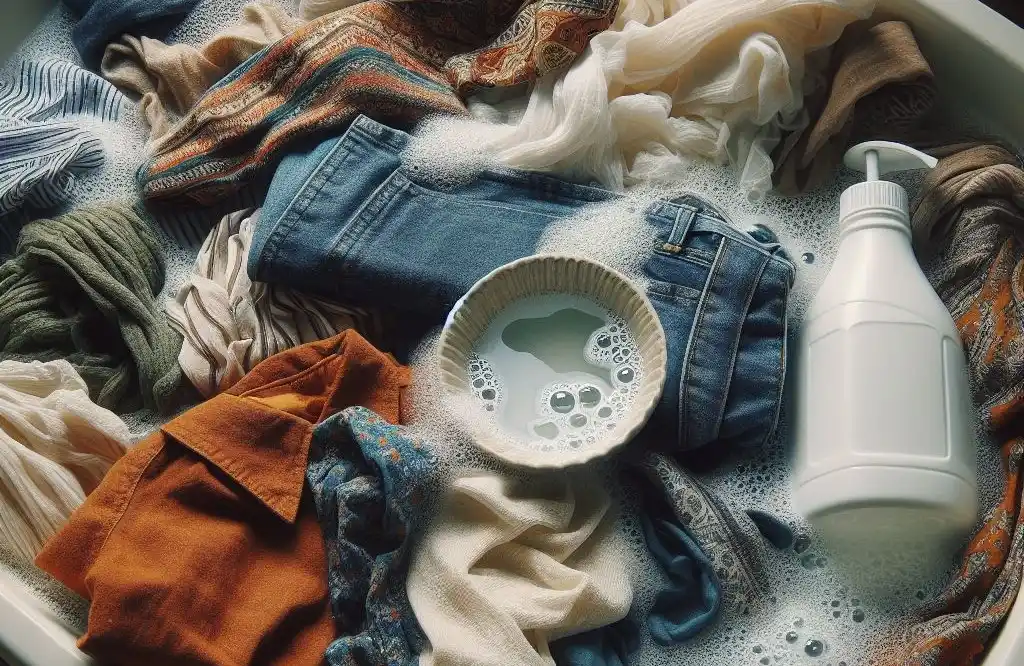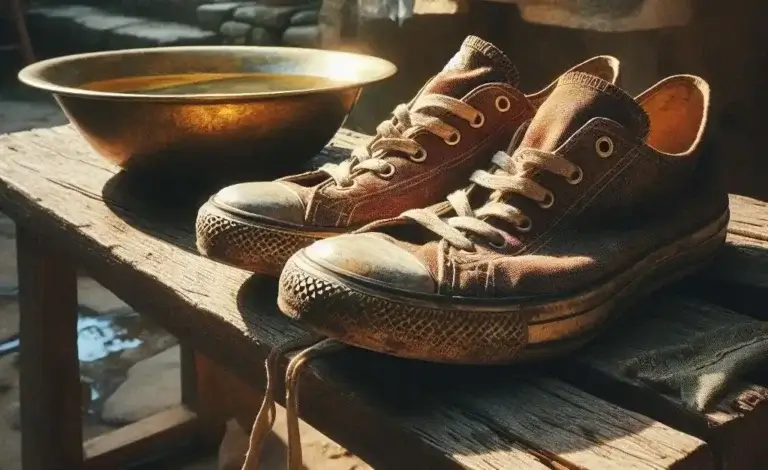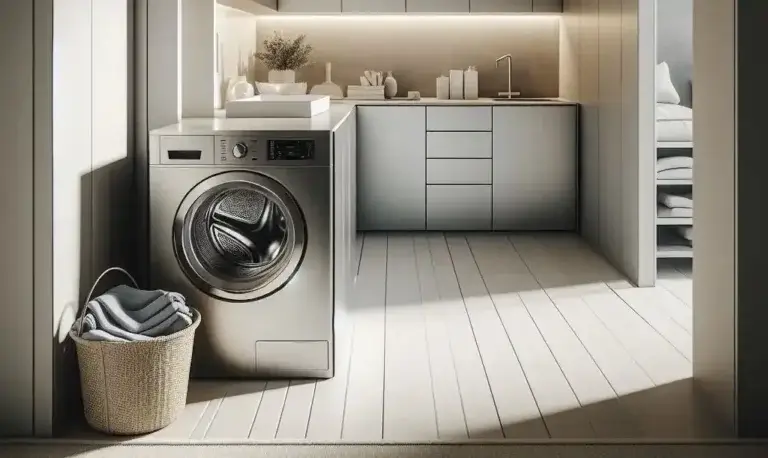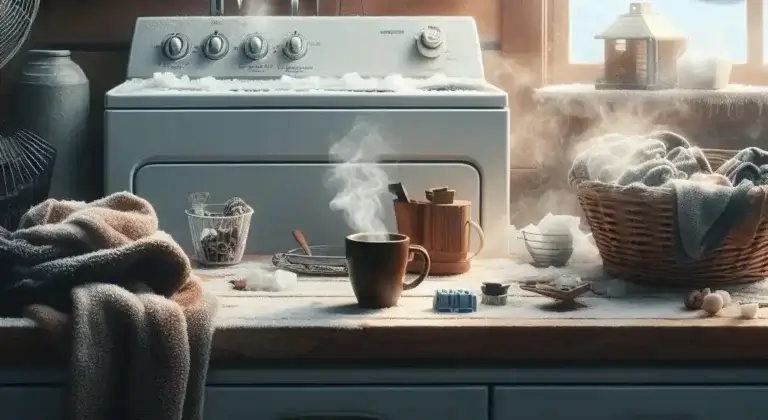Can I Wash Clothes When It’s Freezing Outside? How Extreme Cold Weather Can Affect Your Appliances
It’s a cold winter day and as you load up the washing machine, ready to throw in some laundry, you pause and wonder – can I wash clothes when it’s freezing outside?
With old man winter blowing his icy breath across the land, bringing frigid arctic temps down into the single digits (or lower!), you may worry about whether running home appliances like your washer is safe when outside conditions are so cold.
After all, no one wants to deal with busted water lines, flooded laundry rooms, or cracked washing machine pumps – which could all spell disaster during extreme freezing weather!
So to help you stay cozy and clean even when the mercury takes a nosedive, here’s your guide to safely operating home appliances, doing laundry, and preventing damage during deep freezes and extreme cold snaps.
This comprehensive guide will answer concerns like can you wash clothes when it’s freezing outside, can i do laundry when it’s freezing outside and is it safe to do laundry when it’s below freezing, so let’s start and find the answer to is it ok to wash clothes when it’s freezing outside and doing laundry in freezing weather.
Table of Contents
Can You Do Laundry When It’s Freezing Cold Outside?
The short answer? Yes, you can absolutely still wash clothes even when temperatures plummet far below freezing outside – with a few smart precautions and preparations.
Here’s what to know:
- Regular winter weather generally isn’t cold enough to affect washing machines – It’s extreme or prolonged subzero cold that poses appliance risks
- Run appliance hoses indoors or insulate/heat them to avoid frozen valves/reservoirs
- Drain washing machines after cycles so residual water doesn’t freeze inside
- Check for drafts/insulate laundry rooms bordering outer walls
- Adjust load size and settings – cold water wash, low spin speed, no extra rinses
So while you may need to take a few extra steps when arctic cold grips your area, you can still run the wash even when your town feels like the North Pole!
Below we’ll explore exactly why extreme cold causes concern over home appliance use, what risks it introduces – and how to circumvent issues so you can dry those duds no matter how low the wind chill dips!
How Can Freezing Temps Affect Washing Machines and Other Home Appliances?
Frigid, subzero air temperatures alone generally don’t directly damage most home appliances. But secondary effects of extreme cold can:
- Frozen water lines can rupture and leak, flooding appliances
- Ice blockages can occur in supply valves and reservoirs
- Residual water inside can freeze, cracking pumps or casings
- Drafty, uninsulated rooms sap machines’ ability to warm
Additionally, appliances housed in unprotected outdoor areas or makeshift winter shelters risk reduced functionality or failure in extreme cold:
- Condensation residue left on machines can freeze vital components
- Lack of airflow around condensers causes overheating
- Heavy snow collection blocks outdoor HVAC system airflow
So while your kitchen Frigidaire is likely A-OK when frost coats the trees, appliances that rely on water connections or sit against poorly insulated outer walls are vulnerable when temperatures take a polar plunge.
Let’s break down which of your home appliances face the biggest risks in extreme cold…and how protecting them properly keeps the frostbite (and your repair bills!) at bay.
Freezing Temp Effects on Washing Machines
Of all your home appliances, washing machines are arguably at greatest risk when arctic air comes calling.
Why? As freestanding water-connected appliances, they check a few danger boxes:
- Water feed lines can freeze, rupture, and leak
- Internal water valves and reservoirs can ice up, break from expansion
- Residual water left in pumps or drums can do major damage when frozen
- Inadequate insulation around laundry rooms reduces warming ability
Additionally, washing machines have more nooks and crannies for water to hide in versus refrigerators or HVAC systems – upping the stakes should temperatures inside drop below 32°F.
Frozen Pipes & Water Valves
Your home’s water pipes are infamous for freezing and splitting open during extreme cold snaps – causing messy, expensive water damage when they thaw.
But water supply valves and reservoirs inside appliances can also freeze up and fracture internally:
- Washing machine hoses, if unprotected, can develop ice blockages
- Internal water intake valves can malfunction or break when ice-clogged
- Any seals containing residual water left sitting can freeze and rupture
The result? We’re talking leaks, puddles, and even flooding as the ice melts – plus busted water valves needing replacement.
Not good when it’s the only thing standing between you and sparkling whites!
Cracked Pumps & Casings
Here’s where the plot thickens – and where extreme cold poses its most damaging washing machine risks if you’re not careful.
You see, any residual water left sitting inside the machine’s internal pumps, drums, or drainage systems after a wash cycle can freeze solid when ambient temperatures drop way below 32°F.
This causes an exponential expansion in volume which then cracks or warps pumps, casings, drums, and lines as ice forms.
Then, once things eventually thaw, you’re left with ruptured seals, dysfunctional pumps, water damage, and leaky machines.
Even small amounts of leftover water that seem harmless can lead to busted appliances once Old Man Winter drops by!
Protection From Drafts & Exposure
Finally, where your washing machine sits on outer walls, its level of insulation and exposure to outside air can also be problematic when the mercury crashes.
Units housed in basements, garages, and laundry rooms bordering exterior walls or ceilings are vulnerable to cold drafts and freezing ambient temps – especially if insulation is lacking.
This makes it tough for washing machines to maintain warm internal temperatures needed to wash properly and prevents critical components from freezing up.
How Extreme Cold Temperatures Can Damage Other Home Appliances
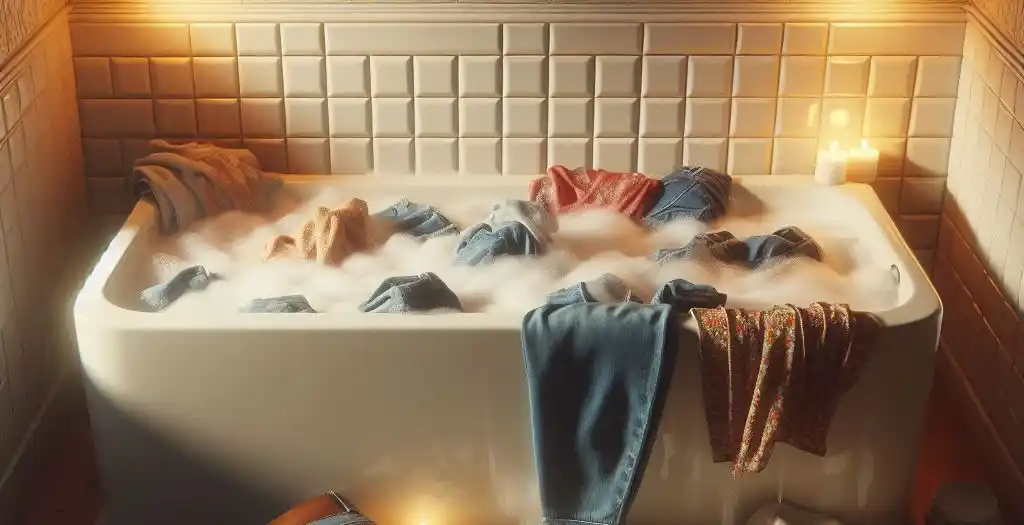
Along with your trusty washing machine, there are a few other home appliances that face functional failures or damage when exposed to bitter, subzero extreme cold.
Here’s how plummeting winter temperatures put other common household machines at risk:
Refrigerator Ice Makers
The ice maker housed inside your kitchen refrigerator seems ready for cold temps, right? While it won’t freeze or crack like your washing machine might, Arctic blasts can still wreak some icy havoc:
- Water lines feeding the ice maker can freeze up, causing leaks
- The unit can make solid ice chunks instead of usable ice cubes
- Excess ice buildup leads to clogged water valves or supply issues
So while the fridge itself is A-OK, keep an eye on ice production levels and water flow to the appliance when brutal cold hits.
Standalone Freezers
Letting your deep freezer or stand-alone garage fridge get too cold poses similar functionality issues:
- Door seals and hinges can crack if units get too cold
- The compressor may continually run trying to maintain frigid temps
- Any food items stored can freeze rock solid or get freezer burn
Your best bet? Don’t let standalone units dip below 0°F if possible via thermostats or insulation. This keeps energy bills down while preventing irreparable cold damage.
HVAC/Furnace Systems
Finally, since they sit outdoors and run on a near-constant basis during winter, HVAC systems take a bit of seasonal beating when the cold arrives.
Extreme freezing temperatures strain the electrical components and structural materials beyond normal operational tolerances – increasing the chance of failures.
Specifically:
- Heat pump efficiency drops drastically below 30°F leaving your home cold
- Exposure to winter conditions like snow, storms, etc causes excess wear
- Freezing rain/sleet builds up on units, then seeps into cracks
- Lack of maintenance ahead of winter leaves them vulnerable
Can I Wash Clothes When It’s Freezing Outside

Winter’s icy grip has arrived, and with it comes a laundry-day quandary: can you wash clothes when the world outside resembles a polar bear’s playground? Fear not, brave adventurers of the washing machine! The answer is a resounding yes, you absolutely can wash clothes in the heart of winter, but a few trusty tips will ensure a smooth and successful laundry expedition.
Firstly, let’s melt away the frozen myth that your clothes will morph into icy statues if hung outside. Science, the ever-reliable magician, steps in with a little trick called sublimation. When water freezes, it skips the liquid stage and transforms directly into vapor, meaning your clothes dry, albeit a bit stiff at first, even in the harshest winter wonderland.
Embrace the chilly weather! Cold water is kinder to your clothes, preserving vibrant colors and preventing shrinkage. Plus, it’s an energy-saving hero, making you both eco-friendly and budget-conscious.
However, your trusty appliance deserves a quick temperature check. Consult its manual to ensure it operates happily down to freezing temperatures. If it’s a bit of a diva, consider a warm water cycle to prime the pipes and avoid any icy surprises.
To expedite the drying process, give your clothes a good spin before venturing outside. This removes excess moisture and allows the wind, nature’s free clothes dryer, to work its magic more efficiently. Choose a sunny, windy spot for your clothesline – sunshine and good air circulation are the allies of speedy drying, even in the cold.
Remember, not all fabrics are winter warriors. Delicates and woolens prefer the coziness indoors, as the cold might leave them stiff or shrunken. Stick to sturdier materials like cotton or denim that can handle the frosty embrace.
With these winter-savvy tips, you can conquer your laundry woes and keep your clothes clean and cozy, no matter the thermometer reading. And if the weather is truly dreadful or time is your most precious gem, consider an indoor drying rack. Just remember to open a window or run a dehumidifier to prevent moisture buildup and mold growth.
So there you have it, a winter laundry guide for the brave and curious. Embrace the cold, befriend the wind, and conquer your laundry pile, one clean sock at a time!
Happy winter washing!
How To Wash Clothes in Freezing Weather
Now that you know how low temps can wreak havoc on home appliances, let’s talk about doing laundry specifically when the weather outside feels frosty.
Here are tips for safely washing clothes during extreme cold winter conditions so you can keep bundling up those wool socks and long johns when needed!
Adjust Your Machine Settings Accordingly
The beauty of modern washers? You can customize settings to allow laundry on even the coldest days! Here’s how:
- Select the cold water setting to reduce strain and ice buildup
- Choose slower spin speeds to limit pump water retention
- Disable extra rinse cycles that leave excess standing water
- Opt for smaller loads that use less water overall
This gives you the flexibility to tweak wash cycles to use less water and retain less moisture inside the machine – lowering the chance of ice expansion damage.
It may take some trial-and-error adjusting settings to limit leftover water while still properly washing those rugged winter wearables.
But putting in the effort means no more hand-scrubbing dirty long johns-in the tub!
Drain-All Residual Water After Cycles
Here’s a pro tip to thwart frozen washing machine pumps and drums: manually drain out ALL standing water left inside the unit once finished washing.
See, even with adjusted settings, a small bit can remain in nooks and crannies that later freeze into appliance-breaking ice.
So make this step part of your regular laundry routine:
- First, run a short extra spin with the drain hose lowered
- Then tilt the front of the unit back to access the remaining water
- Use towels to sop up the last drips and drops inside
It takes just a minute or two. But doing so ensures no sneaky pools are left lurking within machinery to then freeze and crack vital components.
Insulate External Hoses & Back of Unit
Another smart extreme winterization tactic?
Ensuring washing machine water hoses and the backside of the unit stay nice and toasty even as temperatures plummet.
You can accomplish this by:
- Wrapping external water supply hoses with insulating pipe foam
- Attaching adhesive foam sheets or insulation boards directly to the machine back
- Placing the washer against an interior wall away from外部外牆
This shields vital water lines from freezing while helping the unit better retain warmth overall.
No one wants to deal with ruptured hoses or ice-clogged valves when it’s time to spin up a wash, so invest a few bucks in this cold-weather prevention method.
Seal Up Drafts In the Laundry Room
One last winter-prep must?
Ensuring the room housing your washing machine stays sufficiently warm and free of icy drafts.
Even if the rest of your home is brisk, keeping ambient temps surrounding the appliance well above freezing is key.
To lock in warmth:
- Caulk and weatherstrip laundry room windows/doors
- Add insulation to walls or ceilings sharing outer borders
- Check dryer vents for proper seals preventing backdrafts
- Consider a space heater or heating duct register directed at the unit
This fortifies your laundry room as a line of defense against appliances becoming cold-weather casualties!
How To Winterize & Protect Other Home Appliances From Freezing Temps
Along with prepping washing machines to survive sleet snaps and polar vortices, a few other at-risk appliances need some seasonal TLC.
Here’s how to winterize additional units before the deep freeze arrives:
Winter-Ready Refrigerator Ice Makers
To help refrigerator ice makers stay functional when the cold sets in:
- Routinely check for frozen water lines – thaw and insulate as needed
- Monitor ice cube trays for oversized chunks indicating issues
- Disconnect the supply line and drain unit if away for extended periods
This prevents cracked water lines and appliance damage overall.
Outdoor HVAC Unit Protection
For heat pumps, AC condensers and HVAC exteriors:
- Clear out fallen leaves/debris around the unit which retain moisture
- Construct protective weather shields using plywood boards
- Ensure outdoor electrical boxes are sealed to prevent water seepage
- Have backup heating methods on standby like fireplaces or space heaters
Standalone Freezer & Fridges
Extra freezers and standalone garage fridges require a little winter TLC too for optimal cold-weather performance:
- Move units close to interior walls and away from drafty exterior garage doors
- Partially cover/enclose appliances with insulating barriers like blankets or foam boards
- Set thermostats slightly warmer than usual to reduce strain on components
- Routinely sweep away exterior condensation buildup or ice
How To Prevent Water Damage From Frozen Home Appliances
From burst washing machine hoses to ruptured refrigerator water lines, preventing winter water leaks starts with planning.
Follow these appliance preparedness steps before the bitter cold arrives to avoid the damaging effects of frozen water:
Insulate All Exposed Pipes & Valves
- Locate appliance water supply shut-off valves and ensure proper access
- Wrap all exposed water supply pipes & valves with insulating foam covers
- For washing machines, cover water hoses completely in insulating sleeves
This shields vital water lines from the elements to reduce freezing risk.
Install Drip Pans Beneath Units
Whether it’s the washing machine, refrigerator, or HVAC system, placing waterproof catch pans strategically helps contain leaks & drips.
Pans capture moisture from:
- Leaking pump hoses & supply valves
- Condensation buildup underneath
- Melting ice/thawing components
Having this vital layer of protection saves floors and disaster cleanup.
Fully Drain/Shut Off Water When Away
Anytime you’ll be away from home for over 24 hours during extreme cold snaps, fully drain and switch off appliance water lines.
For washing machines:
- Disconnect inlet valve hoses
- Run a full drain cycle
- Capture all remaining interior water
This eliminates standing water that could freeze and rupture fixtures while unattended.
Similarly, shut-off and drain refrigerators, outdoor condenser pumps, boiler systems, and more are based on manuals.
Returning to burst pipes and flooded basements is no one’s idea of fun!
Can I Run My Washing Machine in a Garage or Basement When It’s Freezing Cold?

If space or storage needs dictate moving your washing machine to the basement or garage during winter months, take heed!
These spaces bring new appliance protection considerations once temperatures plunge:
The Basement Battleground
Counterintuitively, basement locales – where the temperature drops below freezing fastest during cold snaps – are most likely to damage washing machines.
The combination of cold ground temps, limited insulation, and drafty access doors makes it tough for any appliance to operate safely or effectively down there when the mercury dips deep.
If forced to quarter a washer in your frozen basement when it’s bitterly cold, take these precautions:
- Fully insulate/seal any windows, doors, or outer walls
- Attach heavy insulating barriers like blankets to the rear
- Invest in a standalone radiator/space heater directed on it
- Always drain the unit completely between uses
- Disconnect hoses when not in use to prevent leaks/ice
Unless you’re also doing laundry yourself in an arctic survival suit, consider less frost-prone placement!
The Chilly Garage
Laundry machines housed in attached garages face similar functionality issues once temperatures plunge:
- Very limited insulation keeps things quite brisk
- No central heating allows rapid ambient air cold seepage
- Nearby vehicle/chemical fumes may damage units
But with a little luck and preparation, garage-based washing can still work if temperatures don’t frequently dip below 15°F to 20°F and machines stay protected.
Some tips:
- Disconnect water lines/drain pumps when not washing
- Fashion-heavy insulating barriers around the sides/rear
- Position washer near interior doorway away from garage vehicle doors
- Use small space heaters to directly warm the unit before the operation
- Avoid washing when conditions are below 20°F outdoors
With a little TLC, you can still catch frosty garage laundry days when needed!
Winter Laundry Tips For Clearest Whites & Brightest Colors
Crisp cold weather outside doesn’t need to dull dirty laundry outcomes – follow these winter wash tips and tricks:
Shake Out Snow/Ice Buildup
Especially after hauling bulky winter gear through drifts and storms, always shake out excess snow, ice chunks, and moisture clinging to the fabric before tossing it in machines.
Not only can large frozen globs damage wash drums and pumps, but leftover frigid meltwater also lowers cycle effectiveness.
Give that ski jacket a few firm whacks to dislodge frozen layers before loading up!
Wash On Cold/Cool Settings
Choose cooler wash temperatures whenever possible to save water and energy while preserving fabric dyes and elasticity season after season.
Most detergents formulated in the last decade clean effectively in cooler water anyway – just allow some extra soak time for stained items.
Use Gentle Detergent Formulas
To help specialty outdoor winter wear fabrics like Gore-Tex and Thinsulate maintain their waterproofing and warmth, skip the hot water and aggressive detergents this time of year.
Gentler cleansers, specialized sport/outerwear detergents, and cold water mesh nicely with performance textiles to lift stains without damaging delicate coatings or insulation.
Check garment tags for recommendations – but when in doubt, go gentle with winter wear!
Allow Extra Drying Time
Depending on how cold and damp the winter air is indoors, clothing items may take longer than normal to fully dry after washing.
To prevent musty leftover moisture smells, either:
- Toss clean wet items into the dryer immediately after washing on a low/delicate setting
OR
- Allow even thicker items to air dry fully across several days on racks/lines indoors
Rushing the process leads to stinky sweatshirts and blankets, so build in some extra patience!
Clean The Lint Trap
Left uncleaned, dryer lint buildup reduces airflow and efficacy – especially concerning already-damp cold weather garments.
Prevent soggy, slow drying by remembering to:
- Empty the lint trap before every load, especially heavy fabrics like towels
- Check the outdoor dryer vent for blockages from snow, nests, etc
- Vacuum the full vent duct annually to maximize winter airflow
Bonus? This added circulation also cuts energy costs!
Winterizing Your Home: How To Prevent Pipes From Freezing & Causing Water Damage
Extreme subzero winter temperatures don’t only threaten laundry machines and appliances. Your home’s water pipes and plumbing are also at high risk for winter damage.
But you can help prevent pipes from freezing and causing leaks, floods, and water damage this winter by taking a few smart precautions:
Insulate Exposed Pipes
Cover exposed interior pipes in unheated crawlspaces, basements, and attics. Use pre-split pipe sleeves or waterproof wrapping to protect vital plumbing.
Seal Off Drafts
Caulk cracks and seal off drafty windows/doors with weatherstripping to help keep warmth inside. Stop cold air from dropping temperatures around the plumbing.
Open Cabinet Doors
Keep sink, washing machine and kitchen cabinet doors open under pipes to allow indoor air to freely circulate them.
Let Faucets Drip
During extreme cold snaps, slightly open indoor and outdoor hose bibs to let them drip water continuously. Keep things moving.
Consider Pipe Heating Cables
In frequently problematic areas, install electric heat cable wraps on pipes to maintain above-freezing temperatures.
Stay proactive against frozen pipes this winter and you’ll keep water-damage disasters away!
Now get cozy by the fire with some freshly laundered blankets and clothes, confident your home appliances can handle whatever winter weather heads your way!
Conclusion: Can I do Laundry in Freezing Temperatures
In most cases, running washing machines, refrigerators, and other household appliances during regular seasonal cold and snow is perfectly safe. It’s really only when Mercury takes prolonged polar plunges into extreme subzero territory that damage risks arise.
By taking smart winterization precautions like:
- Insulating water lines and valves
- Sealing off external cold air drafts
- Draining all residual water after use in units
- Using freeze-resistant tubing additives
- Adjusting device settings for cold weather operation
You can confidently and safely power through laundry days, ice production, HVAC heating and more even as the flakes start to fly!
Just be prepared to put in a bit of extra effort when extreme cold hits to prevent busted home appliances. The winter tranquility (and money saved from repairs) will feel as warm and soothing as cuddling up with a cup of hot cocoa by the fire after sparkling clean sheets!
Stay cozy out there friends!
FAQs: can you do laundry when it’s freezing outside
Winter is here, and so is the laundry question that chills us all: can you wash clothes when it’s freezing outside? Worry not, intrepid laundry warriors! This FAQ section clears the ice and gets you spinning your clothes confidently, even as snowflakes swirl.
Q: Will my clothes turn into icicles if I hang them outside?
A: Not at all! Thanks to science’s magic trick called sublimation, water skips the liquid stage and turns directly from ice to vapor. Your clothes will dry, albeit a bit stiff initially, even in the coldest weather.
Q: Isn’t cold water bad for laundry?
A: On the contrary! Cold water is gentler on colors and fabrics, preventing shrinkage and fading. Plus, it’s an energy saver, making you eco-friendly and budget-savvy.
Q: Does my washing machine even work in the cold?
A: Most machines function just fine down to freezing temperatures. Check your manual to be sure. If it’s a bit temperamental, try a warm cycle first to prime the pipes.
Q: How can I dry my clothes faster in the cold?
A: Give them a good spin cycle before hanging them to remove excess water. Choose a sunny, windy spot for your clothesline – nature’s free dryer! Sturdier fabrics like cotton and denim fare better than delicates and woolens.
Q: I don’t have time for outdoor drying! What are my options?
A: Indoor drying racks are your winter allies! Just open a window or run a dehumidifier to prevent moisture buildup and mold.
Q: Winter laundry seems so complicated!
A: Fear not! Embrace the cold-water advantage, choose weather-friendly fabrics, and don’t be afraid to use an indoor rack if time is tight. With these tips, winter laundry becomes a breeze (well, a not-so-icy one at least)!
Now, armed with these FAQs, you can step into winter laundry with confidence. Remember, science is your friend, cold water is your weapon, and these tips are your shield. Go forth and conquer that laundry pile, one clean sock at a time!

